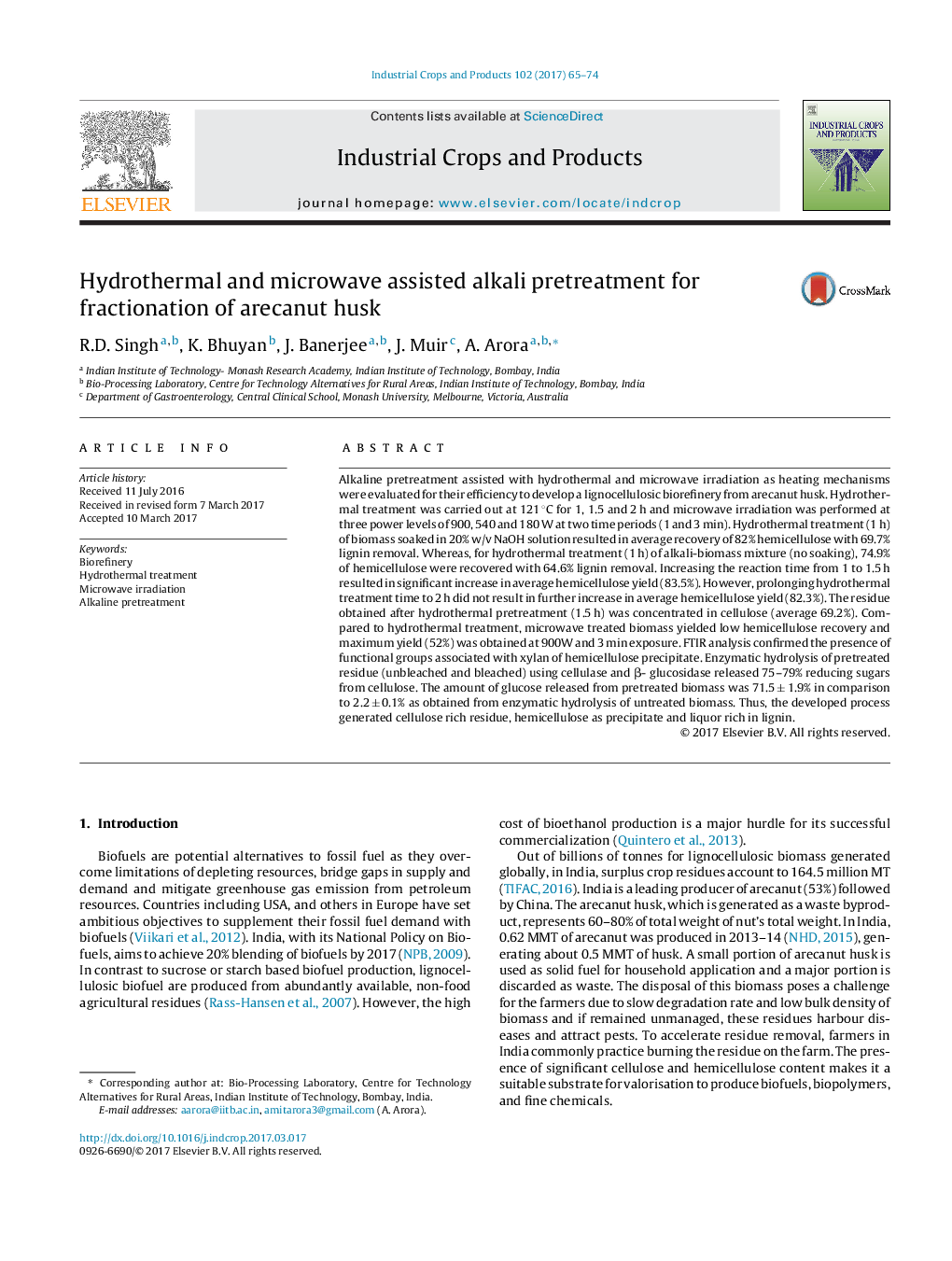| کد مقاله | کد نشریه | سال انتشار | مقاله انگلیسی | نسخه تمام متن |
|---|---|---|---|---|
| 5762155 | 1624808 | 2017 | 10 صفحه PDF | دانلود رایگان |
عنوان انگلیسی مقاله ISI
Hydrothermal and microwave assisted alkali pretreatment for fractionation of arecanut husk
ترجمه فارسی عنوان
پیشگیری از قلیایی هیدروترمال و مایکروویو برای تقسیم کردن پوسته آفتابگردان
دانلود مقاله + سفارش ترجمه
دانلود مقاله ISI انگلیسی
رایگان برای ایرانیان
کلمات کلیدی
موضوعات مرتبط
علوم زیستی و بیوفناوری
علوم کشاورزی و بیولوژیک
علوم زراعت و اصلاح نباتات
چکیده انگلیسی
Alkaline pretreatment assisted with hydrothermal and microwave irradiation as heating mechanisms were evaluated for their efficiency to develop a lignocellulosic biorefinery from arecanut husk. Hydrothermal treatment was carried out at 121 °C for 1, 1.5 and 2 h and microwave irradiation was performed at three power levels of 900, 540 and 180 W at two time periods (1 and 3 min). Hydrothermal treatment (1 h) of biomass soaked in 20% w/v NaOH solution resulted in average recovery of 82% hemicellulose with 69.7% lignin removal. Whereas, for hydrothermal treatment (1 h) of alkali-biomass mixture (no soaking), 74.9% of hemicellulose were recovered with 64.6% lignin removal. Increasing the reaction time from 1 to 1.5 h resulted in significant increase in average hemicellulose yield (83.5%). However, prolonging hydrothermal treatment time to 2 h did not result in further increase in average hemicellulose yield (82.3%). The residue obtained after hydrothermal pretreatment (1.5 h) was concentrated in cellulose (average 69.2%). Compared to hydrothermal treatment, microwave treated biomass yielded low hemicellulose recovery and maximum yield (52%) was obtained at 900W and 3 min exposure. FTIR analysis confirmed the presence of functional groups associated with xylan of hemicellulose precipitate. Enzymatic hydrolysis of pretreated residue (unbleached and bleached) using cellulase and β- glucosidase released 75-79% reducing sugars from cellulose. The amount of glucose released from pretreated biomass was 71.5 ± 1.9% in comparison to 2.2 ± 0.1% as obtained from enzymatic hydrolysis of untreated biomass. Thus, the developed process generated cellulose rich residue, hemicellulose as precipitate and liquor rich in lignin.
ناشر
Database: Elsevier - ScienceDirect (ساینس دایرکت)
Journal: Industrial Crops and Products - Volume 102, August 2017, Pages 65-74
Journal: Industrial Crops and Products - Volume 102, August 2017, Pages 65-74
نویسندگان
R.D. Singh, K. Bhuyan, J. Banerjee, J. Muir, A. Arora,
